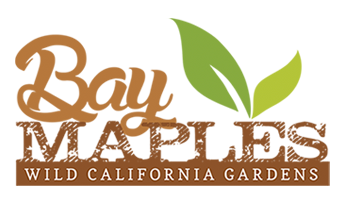How to Winterize Your Garden
Do you know about the microclimates in your yard? Where are the hot spots, and which areas are cool and shaded? Consider shadows cast by buildings, trees, and fences at different times of the day, which will vary by season, creating pockets of cool zones. While walls or fences intensify heat that can protect cold-sensitive plants during Winter, those locations may scorch plants in Summer.
We suggest folks use the compass app on their cell phone to check out the direction their house faces and consider the almighty sun, which controls so many factors involving plants! Most plants love East-facing or morning sun, while not all can handle the Western exposure, which can be blazing in the Summer. Consider also whether your plants are deciduous versus evergreen -when plants lose their leaves in the Winter, more sunlight comes streaming through nearby windows and totally changes the view.
Fall is such a great time to plant! Some exercise and fresh air are advantageous in the cooler months. While we’re in California, take advantage of pleasant, non-freezing temps! Go outside and visit your garden! California natives are always a safe bet to get planted now. They’re often compatible with tender succulents, get established to thrive during shorter hours of daylight and extra moisture, and will also add structure to Winter scenery. California natives we plant now help urban wildlife by providing habitat, food, safety, and nesting in the colder months.
As we usher in the cooler months and anticipate the rainy season, we must rethink our garden strategies, emphasizing sustainability and conservation. At Bay Maples, we pride ourselves on creating uniquely beautiful, low-impact gardens rooted in the principles of nature and innovation. This season, we’re here to share our expertise on winterizing your garden, ensuring it not only survives the chill but thrives while conserving water and nourishing the environment.
1. Reducing Irrigation during the Rainy Season
The winter months can often bring abundant rainfall, providing a natural source of hydration for your plants. Taking advantage of this natural irrigation can significantly reduce your water consumption. Here’s how:
2. Installing a Rainwater Catchment System
Harnessing the power of the rainy season with a rainwater catchment system is not just sustainable but incredibly rewarding.
3. Planting Fall Vegetables and Edibles
Fall is such a great time to plant! There’s the advantage of some exercise and fresh air in the cooler months- while we’re in California, I say take advantage of pleasant non-freezing temps! Go outside and visit your garden! California natives are always a safe bet to get planted now; they’re often compatible with tender succulents, get established to thrive during shorter hours of daylight and extra moisture, and will also add structure to Winter scenery.
California natives we plant now help urban wildlife by providing habitat and food, safety and nesting in the colder months. Believe it or not, the fall season offers a cornucopia of planting opportunities. With temperatures dropping and the ground remaining moist, it’s an ideal time for certain edibles.
4. Managing Raised Garden Beds
Raised garden beds are a favorite among many garden enthusiasts due to their ease of maintenance and versatility. But, when winterizing:
Final Thoughts
Winterizing your garden isn’t just about plant survival; it’s an invitation to rethink, restructure, and reinvent your gardening practices. With the embrace of sustainable methods like greywater, innovative irrigation, and incorporating native plants and recycled materials, your garden can be a testament to eco-friendly practices.
At Bay Maples, we are passionate about helping garden enthusiasts build a strong connection with nature while ensuring minimal environmental impact. If you’re looking to transition to a low-impact, water-conservative garden or need advice on any aspect of winterizing, we invite you to schedule an appointment with us. Let’s nurture the environment one garden at a time.


